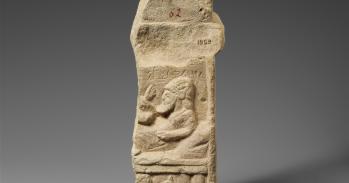
Published 400 years ago, the first comprehensive atlas of Great Britain is being celebrated by Cambridge University Library, home to one of only five surviving proof sets, all of which differ in their composition.
Published 400 years ago, the first comprehensive atlas of Great Britain is being celebrated by Cambridge University Library, home to one of only five surviving proof sets, all of which differ in their composition.
Although the Library holds several copies of the published atlas – including a first edition – it is the hand-coloured set of proofs produced between 1603 and 1611 that is one of its greatest treasures.
Anne Taylor, Cambridge University Library
John Speed’s Theatre of the Empire of Great Britaine is one of the world’s great cartographic treasures. Published in 1611/12, it marked the first time that comprehensive plans of English and Welsh counties and towns were made available in print.
To celebrate its 400th anniversary, Cambridge University Library has digitised each of the proof maps and put them online at www.lib.cam.ac.uk/deptserv/maps/speed.html. The Library is also selling copies of the 60 plus images that make up Speed’s masterpiece.
Inset into the corner of each county map is a plan of its county town and each spare inch of space is used to illustrate famous battles, local coats of arms, as well as Roman and pre-historic sites.
The atlas, bought by the University Library in 1968, is now considered priceless. It contains a single sheet for each county of England and Wales, plus a map of Scotland and each of the four Irish provinces, and paints a rich picture of the countryside at the turn of the 17th century.
A slice of Tudor and Jacobean life in miniature, its influence was so great that it was used by armies on both sides of the English Civil War.
Rivers wriggle through the landscape, towns are shown as huddles of miniature buildings, woods and parks marked by tiny trees and – with contour lines yet to be invented – small scatterings of molehills denote higher ground.
The countryside bursts with human life: a ploughman and his two-horse team are at work in fields outside Worcester, a group of bathers enjoy the Roman spa at Bath, ducks paddle in the River Ouse at York, and the seas around Britain teem with fabulous sea monsters and ships in full sail.
Anne Taylor, Head of the Map Department at the University Library, said: “Although the Library holds several copies of the published atlas – including a first edition – it is the hand-coloured set of proofs produced between 1603 and 1611 that is one of its greatest treasures.”
“It was bought by the University Library in 1968 after the government refused an export licence for the proofs to be sold abroad. We know it as the Gardner copy after its previous owner (Eric Gardner). It really is a rare and delightful item.”
The Cambridgeshire sheet includes portraits of robed academics, a pair of them holding the map’s scale bar as well as 24 coats of arms of the University, colleges and local nobility.
Accompanying each map in the published edition (but not the proofs) is a description of the county. Derived largely from William Camden’s Britannia, a topographical and historical survey of Great Britain and Ireland, the text offers an affectionate portrait of the city and its university, but a rather less appealing description of the Cambridgeshire countryside.
“This province is not large, nor the air greatly to be liked, having the Fenns so spread upon her North, that they infect the air far into the rest. The soil doth differ both in air and commodities; the Fenny surcharged with waters: the South is Champion, and yieldeth Corn in abundance, with Meadow-pastures upon both sides of the River Came,” he notes.
Born in Farndon, Cheshire in 1551 or 1552, John Speed was a historian as well as a cartographer, who paid tribute to earlier map-makers whose work he drew on, especially the county maps of the great Elizabethan surveyor Christopher Saxton. “I have put my sickle into other mens corne,” Speed wrote.
The county maps were the first consistent attempt to show territorial divisions, but it was Speed’s town plans that were a major innovation and probably his greatest contribution to British cartography. Together, they formed the first printed collection of town plans of the British Isles and, for at least 50 of the 73 included in the Theatre, it was the first time these towns had been mapped.
The Theatre was an immediate success: the first print run of around 500 copies must have sold quickly because many editions followed and, by the time of the 1627 edition, the atlas cost 40 shillings. It was a supreme achievement in British cartography. It made John Speed into one of the most famous of all our map-makers and became the blueprint for folio atlases until the mid-18th century.
This work is licensed under a Creative Commons Licence. If you use this content on your site please link back to this page.





